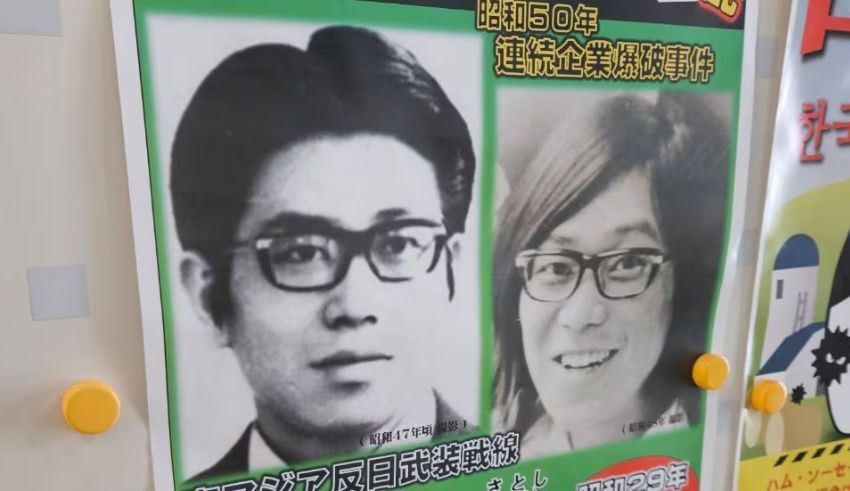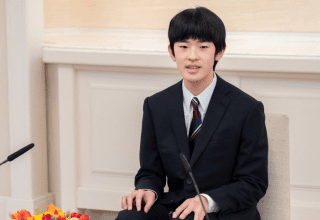
Satoshi Kirishima was one of Japan’s most-wanted fugitives, who had been on the run for nearly half a century. He was a member of the East Asia Anti-Japan Armed Front, a radical left-wing terrorist group that carried out a series of bombings against Japanese corporations in the 1970s, killing and injuring hundreds of people. He was wanted for his involvement in the 1974 Mitsubishi Heavy Industries bombing, which killed eight people and wounded 380 others.
Kirishima had been hiding from the Japanese police since 1977, when he escaped a police raid on his apartment. He had been living under a false name and identity, and had never contacted his family or friends again.
Kirishima’s secret was finally revealed in January 2024, when he was admitted to a hospital in Kamakura, Kanagawa Prefecture, for terminal stomach cancer. He told the authorities that he was, in fact, Japan’s most-wanted man, and that he wanted to die under his real name. He said, “I want to draw the curtain on my life under my real name,” according to local media.
He died three days later, at the age of 70, without facing trial or justice for his crimes.
The Reaction
Kirishima’s deathbed confession shocked and angered many people, especially the victims and the families of the Mitsubishi bombing and other attacks. They expressed their frustration and disappointment that Kirishima had evaded capture and accountability for so long, and that he had died peacefully without remorse or apology.
They also questioned the police’s failure and negligence in finding and arresting Kirishima, and demanded an explanation and an investigation into the matter.
On the other hand, some people, especially those who knew Kirishima personally, expressed their disbelief and sadness that he had been living a double life and had been involved in such violent acts. They said that they had never suspected or noticed anything unusual about him, and that he had been a quiet and friendly person, who loved music and dancing.
They also wondered what had driven him to join the terrorist group and to commit such atrocities, and what had made him reveal his identity after so many years of silence.
Keep Reading
The Explanation
Kirishima’s ability to evade capture for 49 years was largely due to his skillful use of fake identities and documents, and his low-profile and isolated lifestyle. He had obtained various aliases and credentials, such as driver’s licenses, health insurance cards, and bank accounts, using forged or stolen documents. He had also avoided using any digital or online services, such as smartphones, social media, or email, that could have left traces or clues of his whereabouts.
He had also lived a simple and solitary life, working as a live-in worker at a construction company in Fujisawa City, Kanagawa Prefecture, and living alone in an old wooden dormitory near his workplace. He had few friends and acquaintances, and rarely socialized or traveled. He had only one hobby, which was listening to and dancing to American funk music, especially James Brown, at a local bar once a month.
He had also changed his appearance and accent over the years, to avoid recognition and suspicion. He had grown his hair long and dyed it gray, and had worn glasses and a hat. He had also adopted a Tokyo dialect, instead of his original Hiroshima dialect, which he only used when he was drunk.
He had also taken advantage of the weaknesses and loopholes of the Japanese police and legal system, which had failed to track him down and to update his information and status. He had exploited the lack of coordination and cooperation among the police departments and agencies, the lack of resources and technology for the investigation and surveillance, and the lack of public awareness and attention for the case.
He had also benefited from the changes and developments in the Japanese society and politics, which had reduced the relevance and the urgency of his case. He had witnessed the decline and dissolution of the radical left-wing movement, the rise and fall of the economic bubble, the emergence and transformation of the digital age, and the shift and diversification of the security and foreign policy issues.
He had also relied on his luck and chance, which had helped him avoid detection and capture. He had managed to escape several close calls and near misses, such as the police raid on his apartment in 1977, the constitutional court ruling that allowed his son to run for vice president in 2023, and the hospital admission for his cancer treatment in 2024.
He had also followed his instinct and conscience, which had prompted him to reveal his identity before his death. He had decided to end his long and lonely fugitive life, and to face his true self and his past. He had also wanted to give closure and peace to his family and to the public, and to take responsibility for his actions and his fate.




